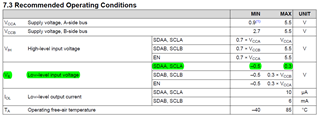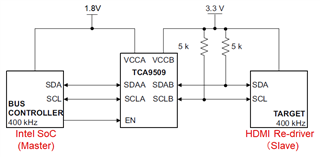Other Parts Discussed in Thread: TCA9803, TCA9801,
Hi, TCA9505 support team
The below is Recommended Operating Conditions and Electrical Characteristics captured from datasheet.


VIL in Recommended Operating Conditions is described that VIL is less than 0.3V. However, VILC in Electrical Characteristics is specified that VILC is minimum 110mV.
This recommendation appears to be inconsistent. I think that the recommended VIL should be less than 110mV. Why is it recommended to be 0.3V?
I've read other E2E's but can't understand this discrepancy.
Regards,
Tamio


